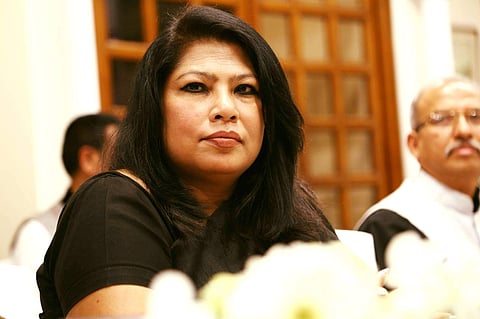

Throughout history, whenever there has been a crisis, it has always taken a larger toll on girls, women and children. The COVID pandemic has resulted in women and girls facing the brunt of it. Dr Aparajita Gogoi, Executive Director of the Centre for Catalyzing Change (C3) and the National Coordinator of the White Ribbon Alliance for Safe Motherhood India, has been working for the rights of women and young girls. She explains how this pandemic and the subsequent restrictions have placed women and girls at more risk and what they are doing about it. Excerpts...
What specific challenges are women and girls facing during the lockdown?
Many families are reeling under unprecedented income poverty in both urban and rural spaces. This has heightened the risk of violence and abuse towards women and girls within families. As economic insecurity increases there is a tendency among the men of the family to resort to lashing out at the girls and women of the house. Patriarchal norms which dictate that the burden of care-work and house-work be taken up only by women and girls is widespread across India, and has multiplied now that people are confined to their homes. As a result, young girls are encouraged to give housework priority over education. As mainstream education moves online, this presents a new set of challenges for girls. Young girls – especially in rural areas – find it harder to take these classes, because of poor internet connectivity, lack of access to phones/computers, the lack of digital literacy, and gendered barriers to the access of the internet.
There has already been a sharp rise in domestic violence cases in the country, with the National Commission of Women reporting a nearly two-fold rise in the number of domestic violence. Countless more are going unreported due to the lack of accessibility women are facing during the lockdown. In the wake of this, it is likely that women and girls will find it even harder to assert their independence. While a significant portion of COVID response has focused on providing immediate relief – essential goods, medical supplies, and so on – we also need to think about long-term solutions. More women work in the informal economy. The crisis has caused loss of employment, and these women have access to limited economic opportunity, nor do they have paid leave neither jobs guaranteed during this period.
What options are these women resorting to now?
Given the demand for physical distancing warranted by the COVID-19 epidemic, maintaining and strengthening non-contact based redressal mechanisms like helplines is vital. Some women are accessing helplines. In India, the National Commission of Women has recorded a more than twofold rise in gender-based violence in the national Coronavirus lockdown period. Distress calls from children have also increased by 50% during the lockdown period.
However, it is important to understand that due to social isolation, which can reduce women’s privacy and increase their daily contact with perpetrators, under-reporting of violence against them is very likely. Moreover, women’s limited usage of mobile phones in India - a recent study estimated that just 38% of women use phones in the country compared to 71% men – puts into question the ability of phone-based mechanisms to provide survivors of violence the support and care they need in this difficult time, emphasizing the need to strengthen local, community platforms. Under the given circumstances, we require community vigilance and support, – identifying, reaching out, and supporting women and girls who survive violence through local mechanisms is key. There is evidence telling us how our local governments, Panchayats, Self Help Groups, and frontline health workers, if equipped with the right perspectives, can identify vulnerable women and provide immediate support.
The other source of support is the frontline workers, ASHA and Anganwadi Workers, who have regular access to women and their homes. In the process of providing health and nutrition information, care and services to mothers and children, they have the opportunity to screen women for their experience of violence, provide initial, basic advice and link them to official support services like a Helpline or a Mahila Thana.
What are the initiatives taken by C3 to address these issues?
We at C3 are providing emergency relief in the communities we are working in. But more importantly, we are taking a two-pronged approach to make sure communities are able to face the challenges over the long term as well. First, we are creating awareness among women, girls, their families and communities, about COVID infection prevention. At the same time, we are gauging the situation for women and girls and their ability to access information and services. Our initial learning is showing that many girls especially from rural communities see some risks of falling out of school, especially if their families are hit with loss of livelihood. We are trying to understand the lived realities of women and girls, be it around violence to livelihoods so that we can recommend, design and implement solutions. On a parallel note, we are also creating awareness messages on COVID 19 prevention measures, destigmatising health workers, accessing available entitlements through WhatsApp and are now exploring radio as a medium to bust myths and encourage families to support women and girls.
